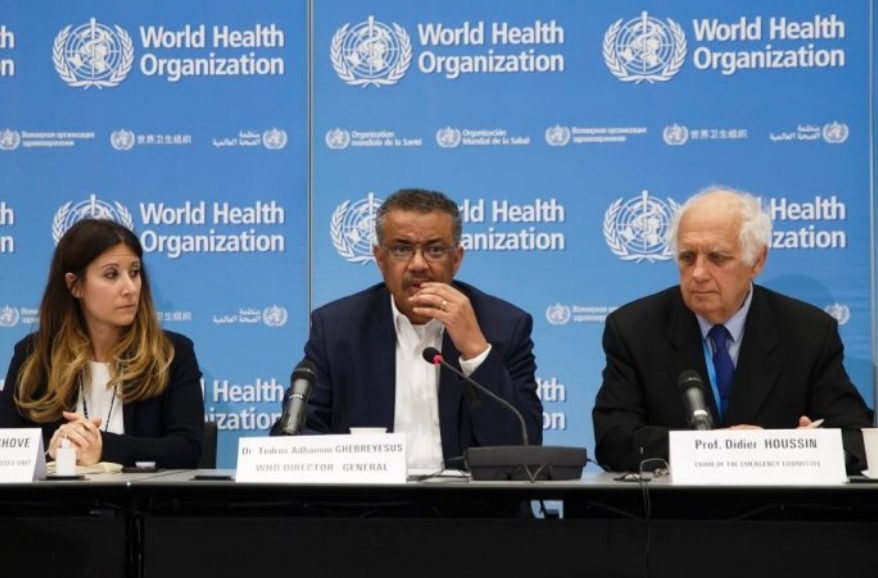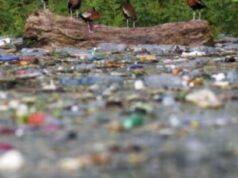Aiming to achieve herd immunity naturally is ‘dangerous’, WHO warns

Herd immunity: The concept is generally used to calculate how many people will need to be vaccinated in a population in order to protect those who are not vaccinated.
Only well-designed studies on those recovered from COVID-19 can provide the much-needed information on immunity
The World Health Organization has condemned the “dangerous” concept of herd immunity for managing the coronavirus (COVID-19) pandemic.
Dr. Michael Ryan, executive director of the WHO’s health emergencies programme said it was wrong to think that countries can “magically” make their populations immune to novel coronavirus.
During a press briefing on May 12, Dr. Ryan said the concept of herd immunity is generally used for calculating how many people will need to be vaccinated in a population in order to protect those who are not vaccinated.
“We need to be careful while using terms in this way around natural infections in humans because it can lead to a very brutal arithmetic which does not put people, life and suffering at the centre of that equation,” he said.
Health expert warns against herd immunity strategy
It was mistakenly assumed that as this disease spreads across the world, only the severe cases become apparent while most people would indeed be infected as reflected in sero epidemiology results. Greater proportion of people getting infected would mean that the pandemic will be over soon and people can go back to normal business.
“But the preliminary results from in sero epidemiology studies are showing the opposite. The proportion of people with significant clinical illnesses is a higher proportion of all those who have been infected. This is because the number of people infected in the total population is probably much lower than we expected. That means we have a long way to go. This is a serious disease, this is public enemy number one. We have been saying this over and over again,” he said. “No one is safe until everyone is safe,” Dr. Ryan added.
The WHO director also warned about the dangerous assumption by countries that have had “lax measures and haven’t done anything [that they] will all of a sudden magically reach some herd immunity” by losing a few old people along the way. “This is a really dangerous calculation. We need to get our priorities right as we head to the next phase of this fight,” he said.
Other challenges
Achieving herd immunity through natural infections has other challenges. While antibodies (IgG and IgM) against novel coronavirus generally develop in one–three weeks after infection, some people do not seem to develop a humoral immune response, as reflected by detectable antibodies. It is unclear why this happens. Writing in a Perspective piece in the Journal of the American Medical Association (JAMA), Dr. Robert D. Kirkcaldy, from the Centers for Disease Control and Prevention, U.S., and others say the relationship between antibody response and clinical improvement is still not clear. Though a small study involving just nine patients found a direct correlation between clinical severity and levels of antibody response, “antibody detection and higher titers have not always been found to correlate with clinical improvement in COVID-19”, they say. Also, mild infections can resolve even before detectable antibodies are produced.
Durability of response
Also, how long neutralising antibodies against the virus would last is currently not known, though one study found that they persist for up to 40 days from symptom onset. In the case of the 2002 SARS, levels of IgG remained high for nearly four–five months before declining during the next two–three years. For MERS, the antibodies persisted for up to 34 months.
“Detection of IgG and neutralising antibodies is not synonymous with durable immunity,” they write. A small study posted in a preprint server bioRxiv found that four rhesus macaques that were infected with coronavirus and recovered did not get reinfected when exposed to the virus 28 days after the first infection. Whether humans too will exhibit such protection is not known, though no cases have so far been reported of people getting reinfected. The detection of over 220 cases of “reinfection” in South Korea was found to be a case of virus remnants being detected and not reinfection or reactivation.
Reinfections possible
Reinfection is mightily possible with at least three of the four coronaviruses which cause common cold. “The reasons for this reinfection are not fully known, but evidence suggests that possibilities include both short-lived protective immunity and re-exposure to genetically distinct forms of the same viral strain,” they write.
But WHO cautions that “there is currently no evidence that people who have recovered from COVID-19 and have antibodies are protected from a second infection”. Infected people may have some level of protection against the virus, but the level and duration of protection is still not known.
Finally, they caution about reading too much from antibody testing of the general population to know the extend of virus spread in the community. Antibody tests have been known to produce wrong results as the sensitivity and specificity of these tests is not known. “It is presently premature to use such assays to determine whether individuals are immune to reinfection” they say. “It remains to be determined whether a robust IgG response corresponds with immunity.”
According to them, only well-designed longitudinal studies involving those who have recovered from COVID-19 for recurrent illness can help provide the much-needed information about reinfection and the duration of protection by the antibodies.



